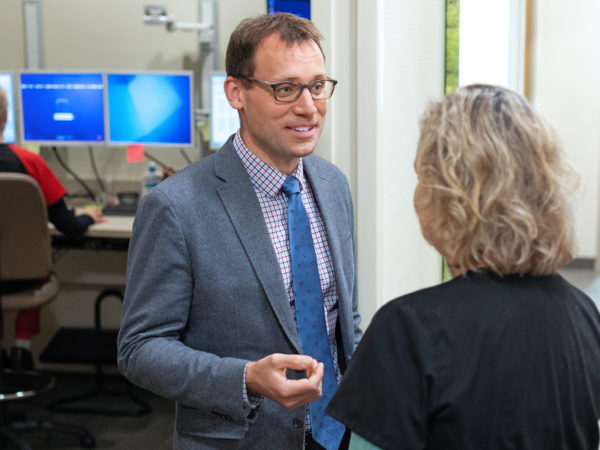
Sarcomas are a group of rare cancers that can form in any tissue in the body. They can be soft tissue sarcomas, which form in the muscles, fat, nerves, or blood vessels; or bone sarcomas, which form in the bones.
Radiation therapy is a type of cancer treatment that uses high-energy rays to kill cancer cells. It is often used to treat sarcomas, either alone or in combination with surgery and/or chemotherapy.
The goal of radiation therapy for sarcoma is to kill as many cancer cells as possible while minimizing damage to healthy tissue. Radiation therapy can be used to:
- Kill cancer cells that are left behind after surgery. This is called adjuvant radiation therapy.
- Shrink a tumor before surgery to make it easier to remove. This is called neoadjuvant radiation therapy.
- Treat cancer that has spread to other parts of the body. This is called palliative radiation therapy.
There are two main types of radiation therapy:
- External beam radiation therapy: This is the most common type of radiation therapy for sarcoma. High-energy rays are aimed at the tumor from a machine outside the body. Treatments are often given daily, 5 days a week. Usually for several weeks. In most cases, a technique called intensified modulated radiation therapy (IMRT) is used. This better focuses the radiation on the cancer and lessens damage to healthy tissue.
- Internal radiation therapy: This type of radiation therapy uses radioactive material that is placed inside the body near the tumor. This is sometimes called brachytherapy.
The type of radiation therapy that is used for sarcoma depends on the size and location of the tumor, the patient’s overall health, and the patient’s preferences.
Although radiation therapy is painless, treatment can cause side effects. Generally, these side effects usually go away after treatment is finished. Side effects of radiation therapy for sarcoma can include:
- Skin problems: The skin in the area that is being treated may become red, dry, and itchy. This usually goes away a few weeks after treatment is finished.
- Fatigue: Radiation therapy can cause fatigue, which is a feeling of tiredness or weakness. Fatigue usually goes away a few weeks after treatment is finished.
- Nausea and vomiting: Radiation therapy can cause nausea and vomiting (more common with radiation to the abdomen). These side effects can be treated with medication.
- Diarrhea (most common with radiation to pelvis and belly).
- Pain with swallowing (from radiation to the head and neck or chest).
- Delayed effects: Radiation therapy can sometimes cause delayed effects, such as heart problems, lung problems, and bone problems. These side effects are usually rare and happen many years after treatment.
Radiation therapy is a safe and effective treatment for sarcoma. It can help to cure the cancer, improve the patient’s quality of life, and prolong the patient’s life.
Minnesota Radiation Oncology (MRO) is a leading provider of radiation therapy for sarcoma, soft tissue cancer, and bone cancer. MRO has 11 radiation therapy centers all staffed with a team of board-certified radiation oncologists, physicists, dosimetrists, and radiation therapists and nurses who provide high-quality care to patients with cancer.
MRO is committed to providing patients with the best possible care. The MRO team works closely with patients to develop a treatment plan that meets their individual needs. MRO while offering a variety of support services to help patients cope with the challenges of cancer treatment.
If you have been diagnosed with sarcoma, soft tissue cancer, or bone cancer, talk to your doctor about MRO. MRO can help you get the care you need to fight cancer and live a long and healthy life.


